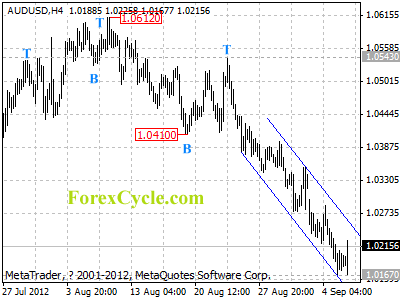By MoneyMorning.com.au
‘He reminds me that we are playing a long game here, and that change is hard, and change is slow, and it never happens all at once. Eventually we get there – we always do.’ – First Lady, Michelle Obama
US First Lady, Michelle Obama is talking about the advice she receives from hubby, US President, Barack Obama.
Clearly the evening conversation at the White House is a lot more intense than at the Sayce House.
But don’t worry, we’re not about to deliver an anti-Obama essay. Mainly because as with all political contests it doesn’t matter who wins. As Gerald Celente says in his latest newsletter, ‘they’re dangerous. They start wars, kill millions, destroy nations. They steal your money and give it to their friends.’
He says all politicians are ‘freaks’. We agree. So whether it’s Obama or Mitt Romney, it doesn’t matter.
Obama has shown he’s just as capable as George W. Bush of sending young men off to die. And doubtless Mitt Romney will capably follow in both of their footsteps.
But we’re not writing to you about the war-mongers today. We’ll have more on that in this week’s Money Weekend.
The reason we quote Michelle Obama is that you can apply her thought process to anything. In this case, we can apply it to the Australian economy…and not in a good way either. We’ll explain what we mean below…
Most things do take time. You can’t bake a cake in seconds, it usually take an hour or more.
For most people it takes hours of effort and practice to learn how to ride a bike.
And few people get the hang of driving a car in one lesson. That takes time too.
The same is true in financial markets.
Most mainstream commentary suggests the financial meltdown started in September 2008, when Lehman Brothers collapsed. What they forget is that trouble was brewing long before that.
The stock markets had topped out in November 2007. But before that in March 2007, warnings bells sounded when US investment bank, Bear Stearns bailed out two of its own hedge funds to the tune of USD$3.2 billion.
Before that, the start of the subprime lending boom stretched back to the 1980s, when Wall Street ‘invented’ mortgage-backed securities.
And in reality, you can take things back even further, to the genesis of the problem — the end of sound money at Bretton Woods in July 1944.
In short, the 2008 bust was a long game…it was slow…and it didn’t happen all at once. In fact it took more than 60 years to cause havoc.
And now we’re seeing this slow process happen again. Arguably, that’s what makes it all the more dangerous for investors. On their own, the small price drops appear minor.
But when you add them together…boy, it’s a big change. You can see that on the following six-month chart for Fortescue Metals [ASX: FMG]:
But it’s not just a highly leveraged Australian mining stock that’s suffering a slow burn.
The Australian housing market is another leveraged industry slowly burning to the ground. And the same goes for the entire Australian and Chinese economies…
The Circus Arrives
Both are slow burning events.
Each day, week, month and year, the impact appears small.
We often hear comments like this: ‘So what if the Chinese economy is only growing at 7% rather than 10%…it’s still the kind of growth most countries would die for.’
That’s true. Most economies would love 7% growth. But the actual growth number isn’t as important as the changing expectations.
If governments have spent and borrowed…and if businesses and consumers have spent, invested, borrowed and grown based on 10% growth, then a 3% cut in Chinese economic growth will have a big impact.
US contrarian investor, Peter Schiff uses a great analogy to describe this problem…
Imagine a circus comes to town. The people who work at the circus start spending their money in the town…the restaurant is full every night…and goods are flying off the supermarket shelves.
However, not realising that this influx of people is a temporary event, the local restaurant owner decides to expand his business. He buys the shop next door, puts in more tables, and upgrades his kitchen to meet the extra demand.
He’s now ready to feed the hordes. Except no-one comes…not that night, or the next night, or for the rest of the year.
Why? Because the circus has left town. What the businessman thought was a sustainable economic boom turned out to be nothing more than a temporary stimulus. And like all stimulus plans, one day it will end.
This leaves the businessman with a big kitchen and a big restaurant, but no customers. In other words, it was a waste of resources.
This is why economic stimulus plans distort an economy. They fool businessmen and consumers into believing that things are just fine. It’s why so many mainstream economists were surprised when retail sales figures fell.
As the Sydney Morning Herald (SMH) reported this week:
‘Retail sales dropped 0.8 per cent in July to a seasonally adjusted $21.418 billion following a revised 1.2 per cent rise to $21.579 billion in June, according to the Australian Bureau of Statistics, underscoring the ongoing weakness in the sector. A consensus of analysts polled by Bloomberg had tipped a 0.2 per cent rise.’
Now, we’re sure the analysts surveyed aren’t dumb. But for some reason they didn’t realise the previous rise in retail sales was only short-term.
Only after the fact, did they figure it out. As the SMH article notes:
‘”Helped by carbon tax compensation, we saw green shoots of recovery in spending in June but this has not flowed through to July,” said Ms Ell [from Moody’s]. “Until there is a sustained improvement in consumer sentiment, retail spending will keep disappointing.”‘
In other words, thanks to government handouts, the circus came to town for a couple of months. This excited business owners, and so they invested more in their businesses. But now the circus has gone, and those businesses have left-over stock they can’t shift.
This week another Aussie retailer has gone bust, women’s clothing store, Ojay.
The Circus Leaves Town
This isn’t about a two-speed economy. It’s not about the mining sector doing well and the non-mining sector doing badly. This is about the end of the mining boom and the knock-on effect it has on the rest of the Australian economy.
Remember, we explained how this works last week. Dollars coming into Australia go into the banking system, they multiply the deposits and lend it to consumers and businesses. Businesses and consumers then spend this money in the Australian economy.
So when the money stops flowing in from overseas…or it flows slower, it doesn’t just impact the resources companies (such as Fortescue Metals), it impacts the whole economy.
But unlike when a circus leaves town, this isn’t so obvious. You don’t see a caravan of consumers and businesses leaving town with all their wares. The exodus is much quieter, and that’s why you get the slow burn.
The Australian economy has had a dream run for 21 years since the last recession. However, despite the protests of the mainstream commentators and politicians, the dream run is over.
Cheers,
Kris.
Related Articles
What You Must Do to Survive the Coming China Crash
Take Advantage of the High Australian Dollar While You Can
Why the Australian Economy’s Bet on China Will Fail

A Slow Burn for the Australian Economy

 Tradervox.com (Dublin) – The 17-nation currency rose to a two-month high versus the greenback as speculation about the European Central Bank plan to announce an unlimited bond buying program today rose. The so called sterilized bond buying program will involve getting funds from other ECB financial systems to be used in bond purchasing. The euro remained high against the yen as two ECB officials indicated that Mario Draghi, the ECB President, is in favor of such a plan to stem the region’s debt crisis. Draghi had told lawmakers in a closed door session that the European Central Bank’s central mandate compels it to intervene in the bond market to ensure that the euro survives. The euro had dropped on Monday as speculation rose on the decision to be taken by the ECB prior to a court decision over the legality of the ECB’s European Stability Mechanism.
Tradervox.com (Dublin) – The 17-nation currency rose to a two-month high versus the greenback as speculation about the European Central Bank plan to announce an unlimited bond buying program today rose. The so called sterilized bond buying program will involve getting funds from other ECB financial systems to be used in bond purchasing. The euro remained high against the yen as two ECB officials indicated that Mario Draghi, the ECB President, is in favor of such a plan to stem the region’s debt crisis. Draghi had told lawmakers in a closed door session that the European Central Bank’s central mandate compels it to intervene in the bond market to ensure that the euro survives. The euro had dropped on Monday as speculation rose on the decision to be taken by the ECB prior to a court decision over the legality of the ECB’s European Stability Mechanism.






